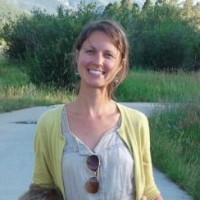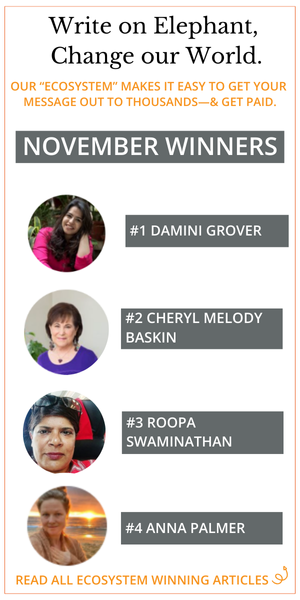Imagine this: your grocery store has a rooftop farm where the produce you will eat and feed to your family is cultivated by a local farmer that lives in your community and is grown right up-top of the store. The food is affordable, minimally handled and uncontaminated by chemicals.
It seems so idyllic that the typical reaction is skepticism. Americans are neglectfully accustomed to paying sky-high prices for organic, sustainable food. We’ve come to a point where homegrown, local, toxin-free food feels fancy. Fancy? Luxurious? Expensive? Have you ever planted and harvested your own food? The experience is authentic, grounded and particularly dirty. Fancy is a consumer dictum, not a reality.
The reality is that safe, nutritious, local food can be for everyone.
And get this: that building in the image above will be topped off by the world’s largest rooftop farm, created by BrightFarms’ CEO Paul Lightfoot.
When I learned that Paul and his team hatched a plan for the world’s largest rooftop farm I was in gear for a motivating connection. Paul operates with a sense of optimism and gumption, and he’s got a spirit that keeps ideas moving in the right direction.
BrightFarms designs, finances, builds and operates hydroponic greenhouse farms at, or near, supermarkets, eliminating time, distance and cost from the food supply chain.
This identity statement simplifies a concept that’s so fresh, so non-conformed, so inspired that CEO Paul Lightfoot does not hesitate to call it a revolution:
“Don’t be discouraged. Think of challenges and opportunities to start your own revolution.”
BrightFarms’ plan, under Paul’s direction, makes old-fashioned sense in a manner we’ve come to think of as new wave. BrightFarms’ platform synthesizes produce growth, harvest, distribution and point of sale into a local system. The BrightFarms business model involves what Paul calls a turnkey, risk-free relationship between every module of the produce supply chain. From BrightFarms:
It was announced that a multi-acre farm will be built on 100,000 square feet of rooftop space in Brooklyn’s Sunset Park—making it the largest rooftop farm in the world. The state-of-the-art, hydroponic greenhouse is being built by BrightFarms, Inc.in partnership with Salmar Properties LLC. The farm will grow up to 1 million pounds of local produce per year, including tomatoes, lettuces and herbs, which will cultivate a new national model for urban agriculture.
The rooftop farm will both help revitalize the building and revolutionize local produce. It will grow enough crops to meet the fresh vegetable consumption needs of up to 5,000 New Yorkers, create jobs, and prevent as much as 1.8 million gallons of storm water from going into local waterways. By eliminating the length and complexity of the produce supply chain, this farm will grow produce that is fresher, tastier, and more sustainable than produce shipped across the country.
How it works:
After studying the project, I had a few questions for Paul Lightfoot. He and I shared an email chat:
Jill: 1 million pounds of produce. 5,000 hungry folks…this is a big project. Have you worked in such a large-scale capacity before?
Paul: This is a huge project and we’ve recently brought on world-class grower Martin Weijters, formerly the Senior Grower at Houweling’s Tomatoes, as our Vice President of Agriculture. Martin’s last greenhouse was a 125-acre facility that is 50 times larger than our Brooklyn greenhouse. We’re ready!
Jill: Why did you decide to connect farming with rezoning and property revitalization?
Paul: 96% of supermarket lettuces come from Salinas, California and Yuma, Arizona. Those of us on the East Coast are consuming lettuces that have been trucked all the way across the country. The inspiration for BrightFarms grew out of our desire to grow food in the same communities where it’s being consumed—a desire to grow food that’s fresher, tastier, and better for the environment.
Jill: The project has many components, ultimately forming a powerful whole. How do you simplify seemingly complex situations into solutions?
Paul: BrightFarms has always been focused on exploiting positive synergies, such as integrated pest management (IPM), which is an environmentally sensitive approach to pest management that relies on a combination of common-sense practices, according to the EPA. Our greenhouse is a marriage of multiple technologies that work in unison to create a more sustainable facility.
Jill: What are you and your friends and colleagues talking about over the table, when it comes to ecology? What’s got you excited these days?
Paul: We’re constantly talking about what we can use in our operations to help us be more ecologically sustainable. I’m excited about renewable energy, sustainable technologies, and green packaging materials and supplies.
Jill: What inspires you? What are you reading and watching? Where are you traveling? Who are you following?
Paul: I’m inspired by people who apply existing technologies is novel ways and I’m constantly inspired by my children. I don’t watch much TV but I read a lot. I just finished American Icon: Alan Mulally and the Fight to Save Ford Motor Company. It is the motivating story of Ford’s turnaround and I would recommend it to anyone.
Paul’s also got a TED Talk capturing his motivation and why his sustainable business model can work:
If BrightFarms sounds interesting, you really need to see the produce on their Flickr feed. For more on this project and all of BrightFarms’ work, check their website and blog. A BrightFarm may be in your area.


 Share on bsky
Share on bsky




Read 8 comments and reply